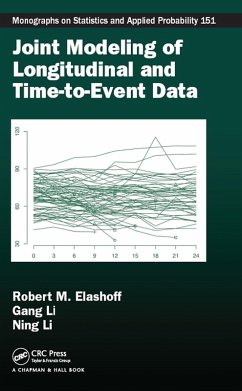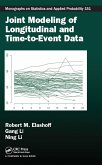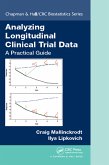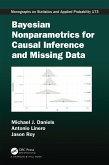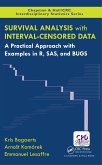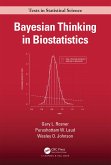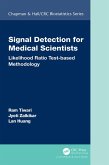Dieser Download kann aus rechtlichen Gründen nur mit Rechnungsadresse in A, B, BG, CY, CZ, D, DK, EW, E, FIN, F, GR, HR, H, IRL, I, LT, L, LR, M, NL, PL, P, R, S, SLO, SK ausgeliefert werden.
Hinweis: Dieser Artikel kann nur an eine deutsche Lieferadresse ausgeliefert werden.
-Helene Jacqmin-Gadda, University of Bordeaux, in Biometrics, March 2018
"This book provides an extensive survey of research performed on the subject of joint models in longitudinal and time-to-event data. ... The authors' expertise in this area shines through their careful attention to detail in presenting the wide variety of settings in which these models can be applied. Overall, I consider the book to be a valuable and rich resource for introducing and promoting this relatively new area of research. ... Where this book primarily succeeds is in the great care taken by the authors in walking through the necessary details of these joint models and the breadth of topics they cover. When topics are left out, the authors refer to a large body of literature to which the interested reader can look to further their understanding. ...
I would recommend it either as a handy reference for researchers or as a graduate level reference text in a specialized course ... [I]t is truly rich with useful content that can be extracted and applied with due diligence. .... I certainly consider it a valuable addition to my bookshelf for personal reference and, should the need arise, I would be happy to refer it to others who might encounter such data in their work.
-Caleb B. King, Sandia National Laboratories, in the Journal of the American Statistical Association, October 2017
"The book starts with a clear description of the work (i.e. topics developed and fields of application) as well as some examples that illustrate the use of joint models.) ... The book finishes with a chapter devoted to the review of model assumption assessment, variable selection, multistate models, cure rate survival data and sample size estimation. Approaches for sensitivity analysis are shown. A general index of sensitivity to non-ignorability is also presented. A brief but good motivation for the use of a joint modelling approach of variable selection is given. A full section of the chapter regards Bayesian approaches. Joint multistate models and cure rate survival are briefly mentioned. ... An extensive and useful bibliography is given at the end of the book."
- Silvana Romio, ISCB News, May 2017
"This book provides the most comprehensive and in-depth coverage of the topic of joint modeling of longitudinal and survival data....A unique feature of this book in comparison to other related books or review papers is its broad yet in-depth coverage of the topics in joint modeling, which include: (i) monotone or intermittent non-ignorable missing data triggered by a single event, such as death, or multiple types of events, (ii) intermittently measured time-dependent covariates, which may be further subject to measurement errors, and (iii) longitudinal data with informative observational times. Extension to multivariate longitudinal and/or survival data as well as event-times subject to competing risks are also covered. In addition to theory and methodology, applications are also emphasized in this book, with a collection of available software listed in the Appendix. This is a useful book for anyone wishing to dive into the joint modeling paradigm as well as a good resource for seasoned researchers. It is well suited for a graduate course."
-Jane-Ling Wang, Distinguished Professor of Statistics, University of California, Davis, June 2016
"Many good books are now available that treat the analysis of repeated measurement and time-to-event data as separate topics. However, in many longitudinal studies both types of data are collected and a joint approach is required in order to exploit fully the information in the data. This book is a very welcome addition to the literature on joint modelling. It contains a nice blend of theory and applications, and would be an excellent text for a graduate course in biostatistics or as a manual for practising biostatisticians."
-Peter J Diggle, CHICAS, Lancaster University Medical School, May 2016
"...A clearly well-written book covering a broad range of topics on joint modelling of longitudinal data and time-to-event data that will, without doubt, serve as a valuable reference for researchers interested in this field. At the same time, this timely and comprehensive overview is accessible to those with almost no background in this area and practitioners with a large collection of applications, real data and online data sources. This book could also serve as a valuable textbook for graduate students in statistics or biostatistics due to its balance of methodology and practical examples."
-Jianguo Sun, University of Missouri, May 2016

